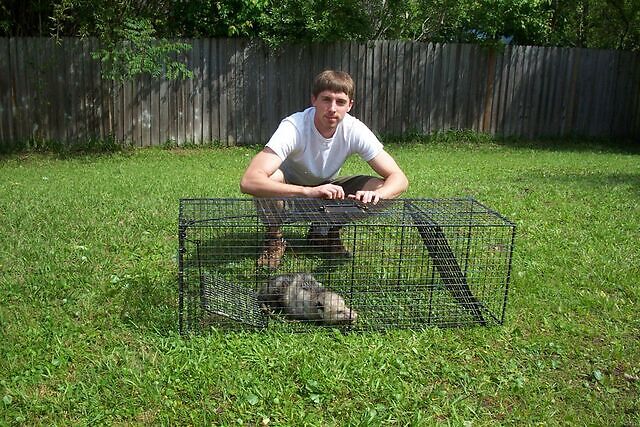Keeping Opossums Out of The Garden
Opossums are omnivorous scavengers. Their diet includes vegetation, mice, snakes, nuts, and carrion in their natural woodland habitats. As they come into contact with people and suburbia, their scavenging options widen to include raiding gardens and trash cans.
Opossums invading your garden in the night can be noisy, messy, and damaging for your plants. Thankfully, there are ways to protect it. By taking steps to make your yard less inviting, making use of various repellents and deterrents, and installing fences and other barriers, you can keep your garden opossum-free.
Want to keep your home-grown veggie patch or fruit trees safe? Read on to learn all the tips and tricks for keeping opossums out of your garden.
Remove Food Sources

The secret to keeping opossums out of your garden is to remove anything that would attract them in the first place. One key attractant for an opossum in suburbia is food.
Here’s what you can do to remove food sources for opossums:
- Harvest any garden fruit and vegetables as they ripen.
- Don’t let your garbage can overflow, and secure the lid.
- Don’t store pet food outside, and keep it sealed in glass or metal containers.
- If you use organic matter in your gardens, invest in a compost bin that the opossum can’t get into.
- Use lawn products that reduce lawn grubs, as opossums eat them.
- Clean up any spilled seed from under bird feeders.
Remove Hiding Places
The second key attractant for an opossum in suburbia is shelter. Here’s what you can do to remove hiding places for opossums:
- Keep your shrubs and hedges well-trimmed.
- Remove woodpiles or store them under a secured tarp that the opossum can’t get under.
- Store wheelbarrows in a shed, or in such a way that animals can’t access it as a hiding space.
- Keep the yard tidy and get rid of any unnecessary clutter.
Deter Opossums
There are various opossum repellents available commercially, and they come under two main categories: scent-based repellents and physical deterrents.
Scent-based repellents should be applied anywhere that’s a high-traffic area for the opossum, such as garbage cans, gardens it’s been eating, or tree bases. You’ll need to reapply regularly, as it wears off over time and is washed away by rain or any watering.
Physical deterrents can be a more effective means of preventing opossums from straying into your garden. Motion-activated sprinklers will spray water where movement is detected. Anytime an opossum comes within range, it gets squirted by a jet of water, scaring it off.
Another option is the motion-sensor light, particularly if you aim it at the darker areas of your yard. Opossums are nocturnal creatures, so being suddenly lit up and exposed to any potential predators is often enough to startle them into leaving.
Exclusion

Exclusion works by using physical barriers to keep possums out of your garden altogether.
It has three main elements:
- fencing
- baffles
- pruning
Fences
- Install a fence around the perimeter of your property. Build it at least 3-4 feet high and dig it into the ground a few inches to prevent the opossum from digging under it.
- You can also install L-shaped footers made from steel mesh on the exterior side of your fence, buried a couple of inches under the ground.
Baffles and Pruning
Tree branches are pathways for opossums. Building a fence will stop them from entering your yard from the ground, but you will still need to prevent them from coming in through the trees.
- Prune any overhanging limbs.
- Install baffles around the trunks of your trees near the fence line. A baffle is a sheet of metal, at least 2 feet wide, that encircles the tree trunk, preventing animals from climbing past it.